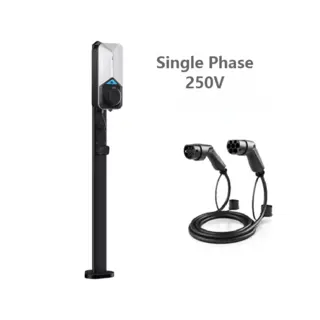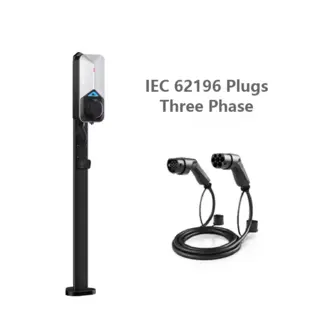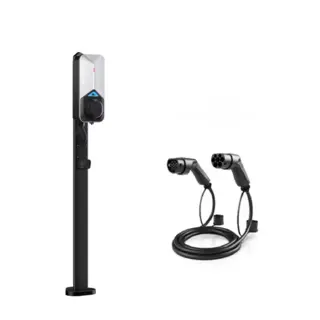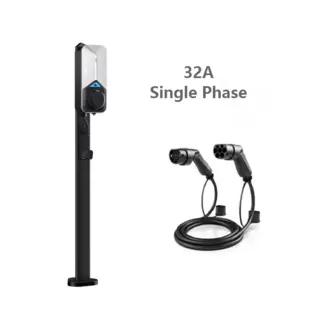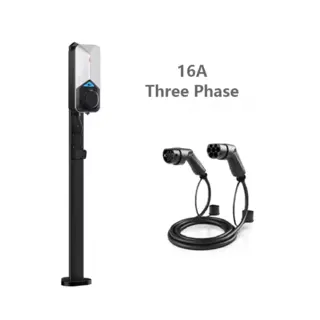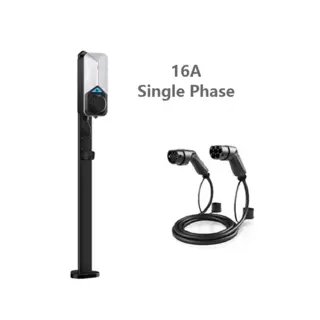Our EV charging cables are designed to meet a wide range of charging needs, featuring various connectors including Type 1 (J1772), Type 2 (Mennekes), CHAdeMO, and CCS (Combined Charging System). Each cable ensures reliable connectivity and efficient power transfer for seamless electric vehicle charging.
Type 1 connectors are ideal for North American models, while Type 2 connectors cater to European standards. The CHAdeMO and CCS options offer fast charging capabilities for compatible vehicles, enhancing user convenience.
Constructed from high-quality materials, our cables are durable and weather-resistant for optimal performance in any condition. Experience hassle-free charging with our comprehensive solutions.
As a leading charging cable manufacturer in China, OEM/ODM customization is available to meet your specific requirements. We are dedicated to delivering quality and innovation.
An EV cable is the charging cable used to connect an electric vehicle to a power source, enabling it to recharge its battery. Every electric vehicle typically comes with a set of charging cables. One end of the cable is equipped with a plug that fits into a standard domestic socket, while the other end features a connector that is compatible with the specific requirements of the electric vehicle.
For home charging, this cable is sufficient to connect to domestic plugs, but when charging at public charging stations, a different cable may be required, depending on the type of connector used by the station. In many cases, manufacturers provide both home and public charging cables as part of the EV purchase package. However, if the vehicle only comes with a domestic cable, owners can purchase a public charging cable either from the vehicle manufacturer or third-party retailers.
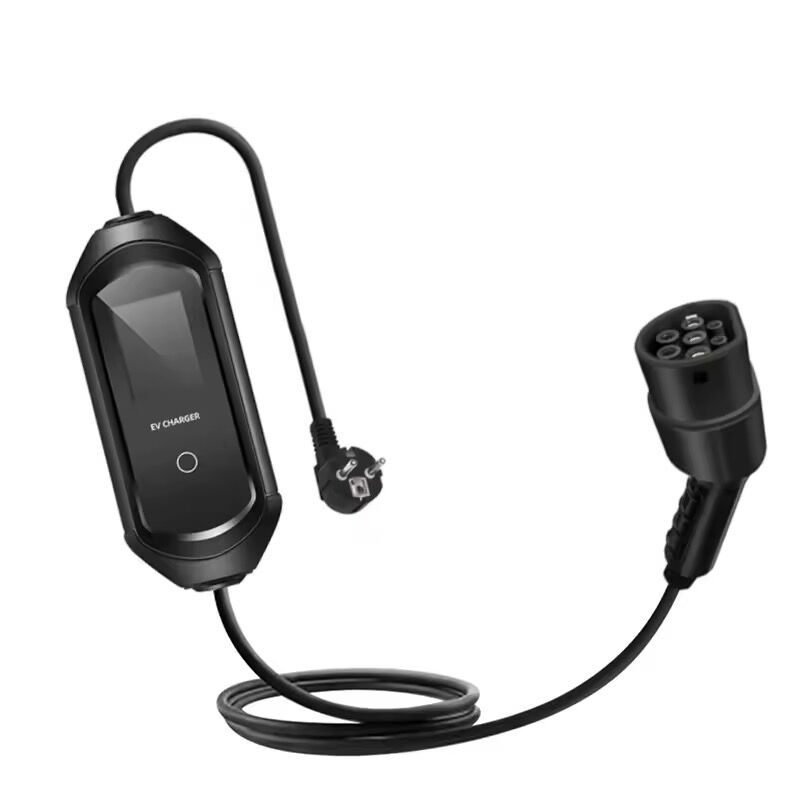
EV charging cables come in various types, designed to cater to different charging standards and vehicle requirements. These cables are classified based on their plugs, conductors, and power delivery capabilities. The two most common types of cables are Type 1 and Type 2, though other variations are available as well.
The Type 1 cable (J1772) is used for single-phase charging, delivering a maximum of 3.7 kW, suitable for slower charging. Common in North America and some older European models, it operates on 110V to 250V and supports up to 16A. Some Type 1 cables can handle 32A, offering 7.4 kW. While newer EVs use Type 2 connectors, older models like the Mitsubishi Outlander still use Type 1. Type 1 cables can be used with Type 2 stations via an adapter.
The Type 2 cable, the standard in Europe, supports both single-phase and three-phase charging, allowing faster charging. It is compatible with fully electric and hybrid vehicles. The main difference from Type 1 is that Type 2 cables enable three-phase charging, reducing charging time by distributing power more evenly. A Type 2 cable typically has two conductors for single-phase and four for three-phase vehicles. For single-phase charging, it provides 11 kW at 16A, and up to 22 kW at 32A for three-phase charging.
These cables are designed to connect two Type 2 charging connectors, which are the most common configuration in Europe. They are used when both the vehicle and the charging station have Type 2 sockets.
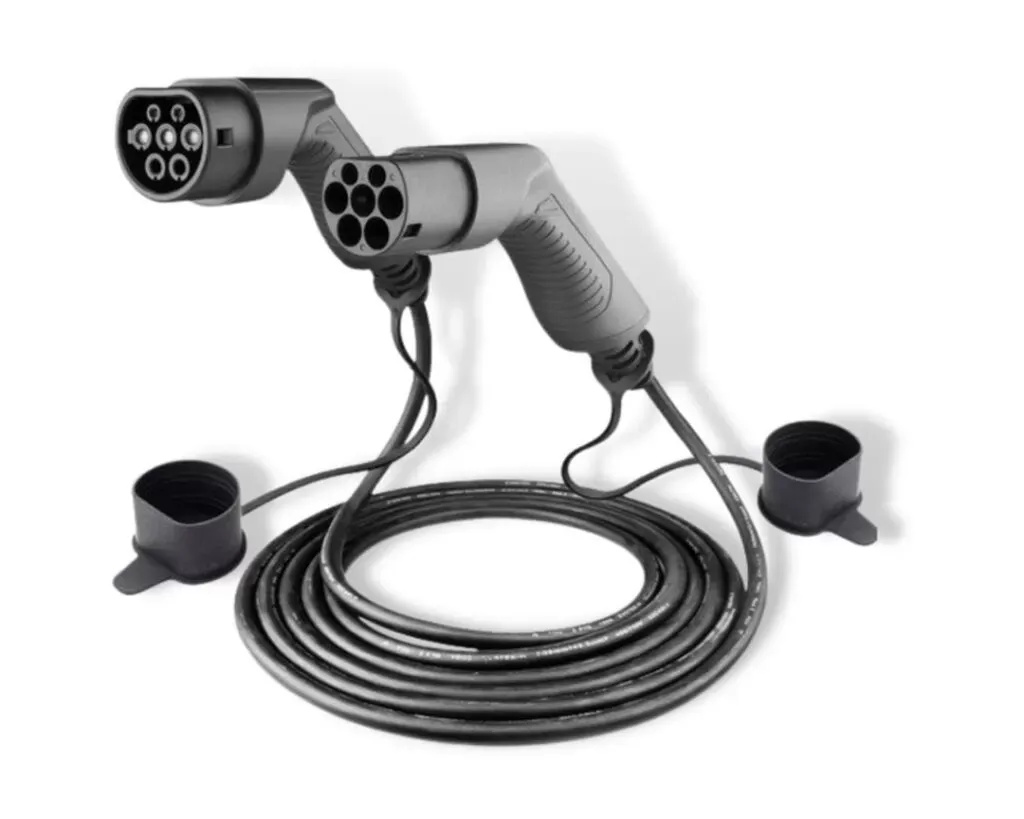
These cables allow users to charge their EVs using a regular three-pin domestic plug. While the charging speed is slower compared to dedicated EV chargers, this configuration is convenient for charging at home when other options are unavailable.
These cables are designed to allow a vehicle with a Type 1 socket to be charged at a Type 2 charging station. These cables bridge the compatibility gap between the two plug types, allowing older models to access newer charging infrastructure.
These are used to charge Type 1 vehicles with a standard three-pin domestic socket. Like the Type 2 to 3 Pin cables, they offer a more accessible but slower charging option for home use.
When it comes to EV charging cables, the Type 2 connector is the most widely accepted and standardized option, particularly in Europe. It is suitable for a variety of vehicles, including fully electric and hybrid models. As mentioned earlier, Type 2 cables can support both single-phase and three-phase charging, offering more flexibility and faster charging rates compared to Type 1 cables.
In addition to faster charging capabilities, Type 2 cables also benefit from better power distribution. Three-phase charging, enabled by the four conductors, allows for an increased flow of electricity, resulting in a more efficient and rapid charging process. This is especially important in commercial settings or for EV owners who rely on fast, efficient charging.
EV charging cables are designed to provide efficient and reliable power delivery for electric vehicles. Their key advantages include:
Engineered to seamlessly connect with a wide range of charging stations, they offer versatility for use at home, workplaces, and public charging points.
These cables support high-capacity charging, enabling faster energy transfer to minimize charging time and maximize convenience.
Open-ended designs provide flexibility for customization, making them suitable for diverse EV systems or integration with various charging setups.
Built for durability, these cables perform reliably in both indoor and outdoor conditions, resisting extreme weather and ensuring long-lasting use.
When selecting an EV charging cable, it's essential to consider the following factors:
Ensure that the cable is compatible with your vehicle's charging socket type (Type 1 or Type 2). Many modern vehicles come with Type 2 charging ports, but older models may still use Type 1.
Consider where you will be charging your vehicle. For home charging, a Type 2 to 3 Pin cable may suffice for slow charging. However, if you're using public or commercial charging stations, you may need a more robust Type 2 cable for faster charging.
If you need faster charging, opt for a Type 2 cable that supports three-phase charging, if your vehicle is compatible. Three-phase charging can significantly reduce the time it takes to charge your EV.
Choose a high-quality cable that can withstand the wear and tear of frequent use, particularly if you plan on using it for public or commercial charging.



